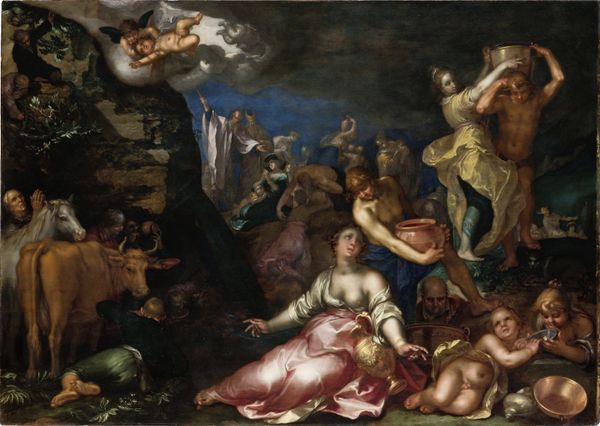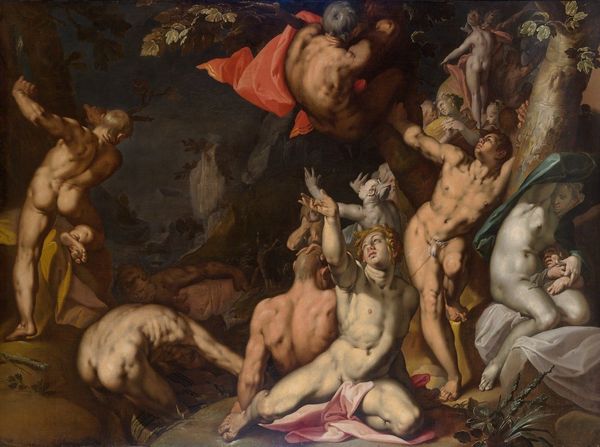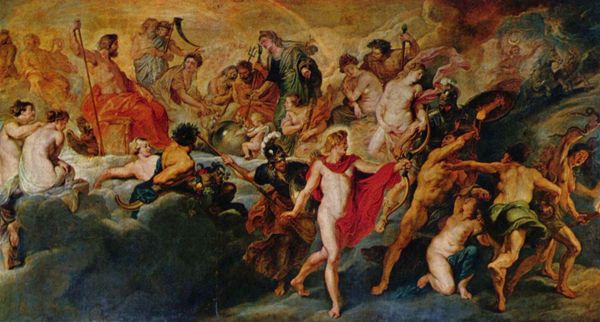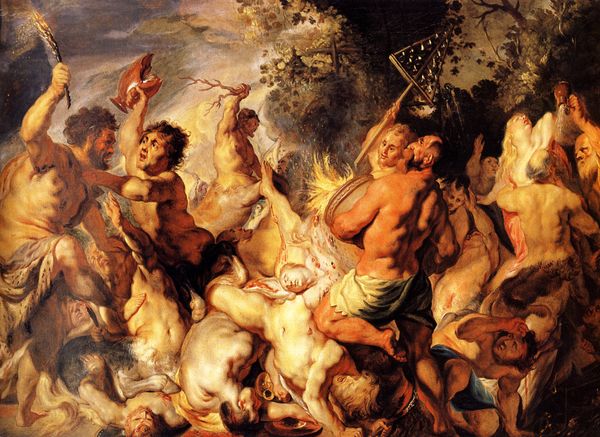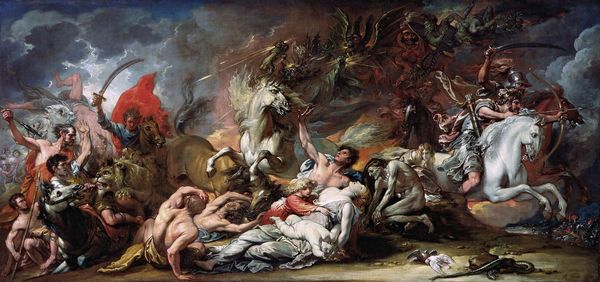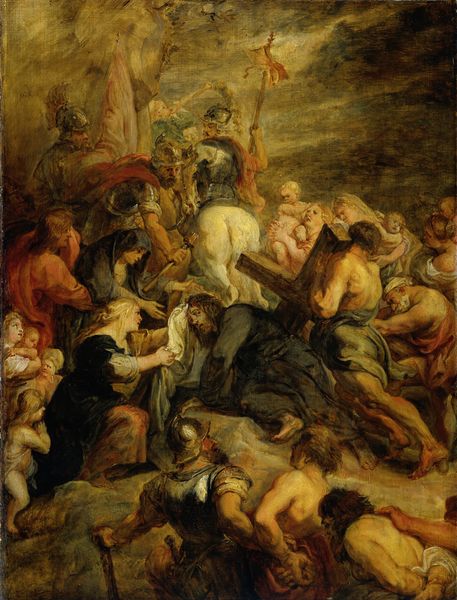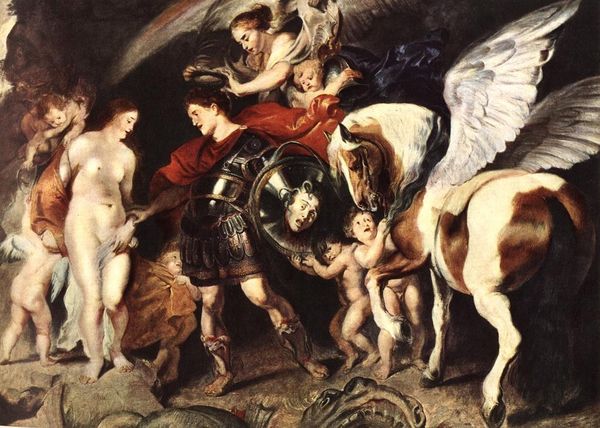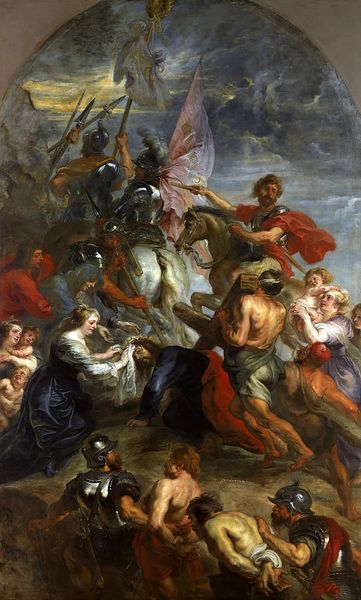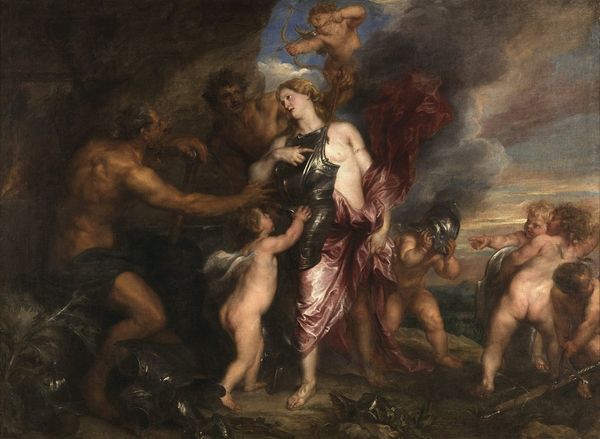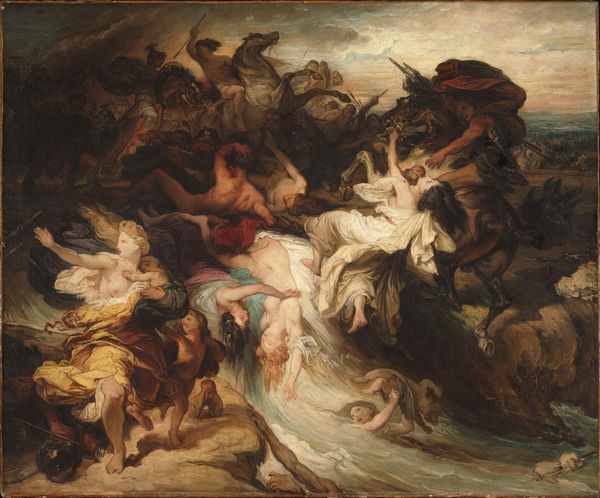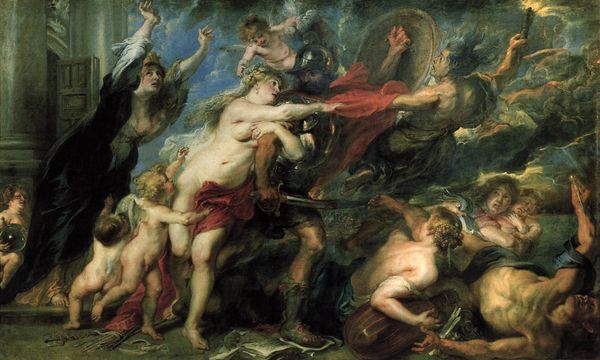
painting, oil-paint
#
allegory
#
narrative-art
#
fantasy art
#
painting
#
oil-paint
#
landscape
#
figuration
#
oil painting
#
romanticism
#
orientalism
#
chiaroscuro
#
mythology
#
painting painterly
#
history-painting
#
academic-art
#
nude
Dimensions: 392 x 496 cm
Copyright: Public domain
Curator: At first glance, this painting is overwhelmingly chaotic, violent, even. It seethes with a dramatic energy, stemming from its dense composition. Editor: That is Eugène Delacroix's "Death of Sardanapalus," finished in 1827, and you are right, there is a concentrated focus on the fall of Assyrian king Sardanapalus. The king decided, rather than face defeat, to destroy all of his possessions, including his palace, riches, and harem. Delacroix draws on the myth, emphasizing the operatic climax of the story. Curator: There’s a clear hierarchy here—Sardanapalus looks detached on his funeral pyre, observing with cold indifference. Note how he's high up on the left, and he almost blends into the drapery and pallid flesh tones of the women being killed. A sort of ghostly witness. His placement certainly carries emotional weight. Editor: Absolutely. The symbolic implications are hard to ignore. Think about the themes circulating at this time – revolution, liberty, the "Orient," what it means to be civilized or not. There's a complex Orientalism on display here. Sardanapalus, surrounded by wealth and decadence, could be seen as a symbol of the excesses that lead to ruin, a cautionary tale painted during the rise of European colonial powers. He's not an active participant but a decadent observer, even enjoying the carnage he commands. Curator: And consider Delacroix's specific technique. The brushwork is incredibly loose and gestural; he employs dramatic chiaroscuro, the rendering is painterly, not realistic. This all contributes to a feverish, dreamlike quality. It reads as history painting, but leans heavily into pure fantasy. Editor: But even through this apparent chaos, recurring motifs resonate – such as that of self-immolation. Sardanapalus destroying everything around him has been compared to a form of ritual suicide. This connects him with other figures in history and literature who chose death over dishonor or subjugation. It suggests cultural anxieties about societal collapse and transformation. Curator: I think it's a visual experience more than anything, to allow oneself to be swept up in the raw energy that Delacroix has captured. Editor: Yes, the canvas holds layers upon layers of interpretations; a real challenge to resolve them.

